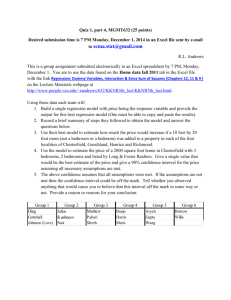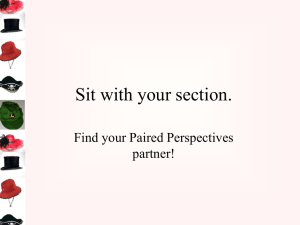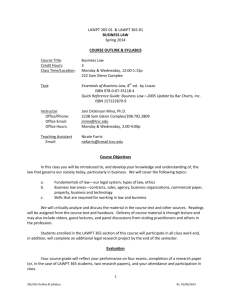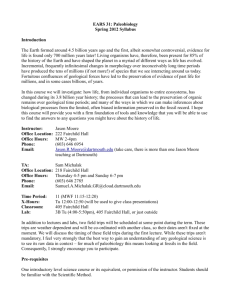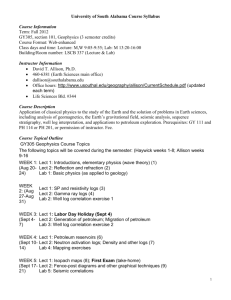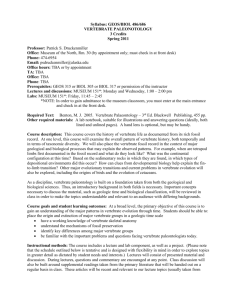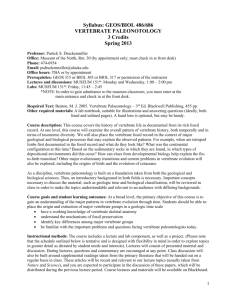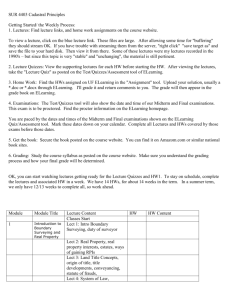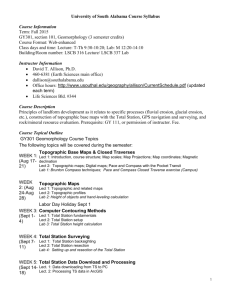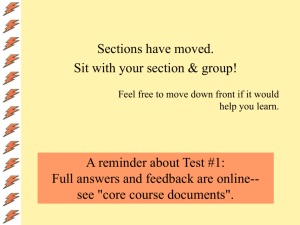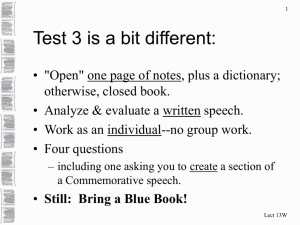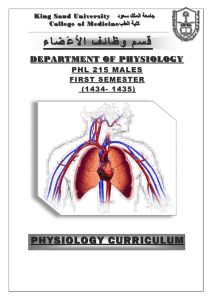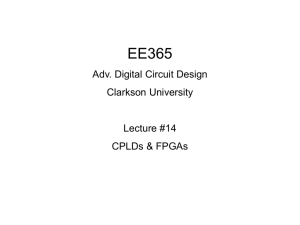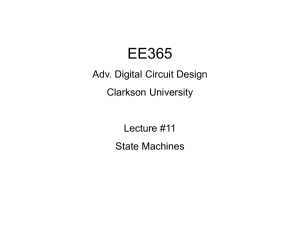non-covalent interactions
advertisement
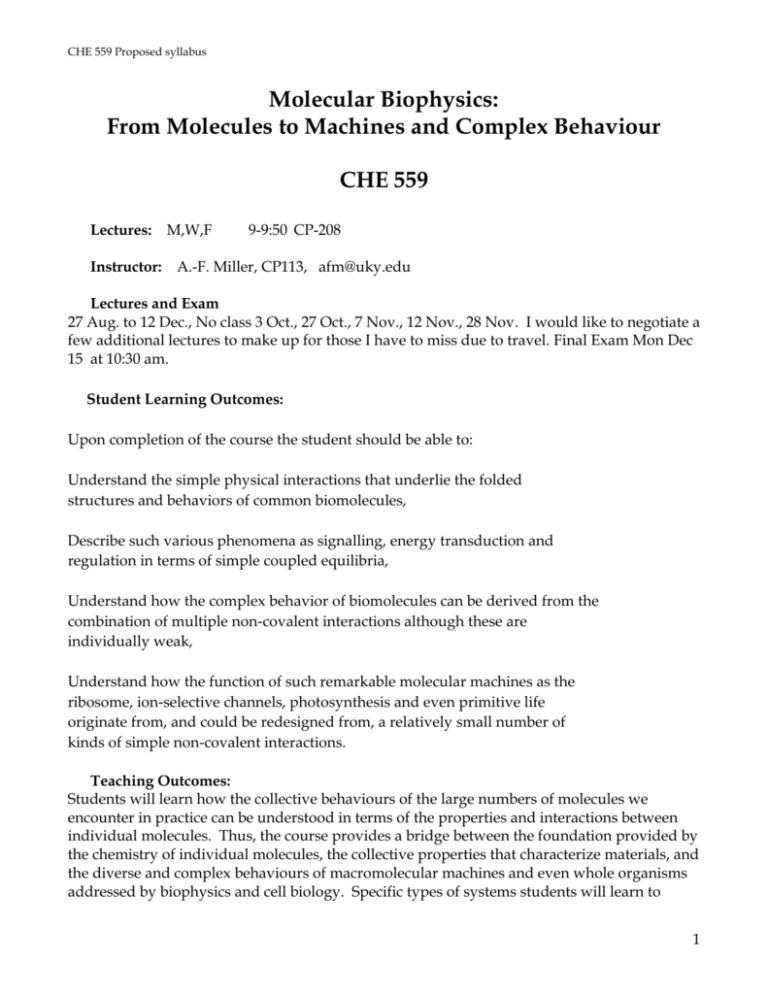
CHE 559 Proposed syllabus Molecular Biophysics: From Molecules to Machines and Complex Behaviour CHE 559 Lectures: M,W,F Instructor: 9-9:50 CP-208 A.-F. Miller, CP113, afm@uky.edu Lectures and Exam 27 Aug. to 12 Dec., No class 3 Oct., 27 Oct., 7 Nov., 12 Nov., 28 Nov. I would like to negotiate a few additional lectures to make up for those I have to miss due to travel. Final Exam Mon Dec 15 at 10:30 am. Student Learning Outcomes: Upon completion of the course the student should be able to: Understand the simple physical interactions that underlie the folded structures and behaviors of common biomolecules, Describe such various phenomena as signalling, energy transduction and regulation in terms of simple coupled equilibria, Understand how the complex behavior of biomolecules can be derived from the combination of multiple non-covalent interactions although these are individually weak, Understand how the function of such remarkable molecular machines as the ribosome, ion-selective channels, photosynthesis and even primitive life originate from, and could be redesigned from, a relatively small number of kinds of simple non-covalent interactions. Teaching Outcomes: Students will learn how the collective behaviours of the large numbers of molecules we encounter in practice can be understood in terms of the properties and interactions between individual molecules. Thus, the course provides a bridge between the foundation provided by the chemistry of individual molecules, the collective properties that characterize materials, and the diverse and complex behaviours of macromolecular machines and even whole organisms addressed by biophysics and cell biology. Specific types of systems students will learn to 1 CHE 559 Proposed syllabus address include phase equilibria, two and three component solutions, ligand binding, elaboration of repetitive higher-order structures (order in space), linked equilibria, regulation (signaling), energy transduction in various guises, mechanisms and costs of specificity, rhythmical behaviour (order in time), molecular machines, origin of life. Thus, while we will start with nuts and bolts and a fairly physical discussion of individual interactions, we then open up discussions and engage in a grand tour of some of the most remarkable supramolecular behaviours observed, and how they can be explained by, and designed from, fundamental interactions. This course is aimed at graduate students and senior undergraduates who have had a course in statistical physics or thermodynamics (for example CHE 440), basic physics such as PHY232 or PHY 213 and biological chemistry, such as CHE 550. Grading Problem sets Quizzes Literature Research Paper Participation / Discussion Final Exam 4 offered on biweekly basis Offered without warning at the beginning of lectures Based on recent papers in the primary literature Includes finding papers on topics of interest, and leading the discussion on a selected topic in section 3 . Covers everything, will include a short essay. 25% 10% 20% 20 % 25% Literature Research Paper, Due Nov. 21 (Friday) ≤ 5 pm. Each student, alone, must identify a lead article that appeared in the primary literature in 2002 or 2003 and use this as the basis of a 10 page paper (all inclusive, single spaced). The paper should provide a balanced (though brief) review of the topic chosen, refer to at least 6 published articles and not be on the student's group's immediate area of research. The topic must be an assembly of molecules and how its behaviour / activity / physical properties stem from the component molecules. Be as rigorous as possible and incorporate quantitative data and a discussion of how some intermolecular forces or principles of thermodynamics are important. The subject and lead article must be approved by Dr. Miller by Oct 31 at 5 pm (for 20% of the paper grade, or 4% of the course grade). Since Dr. Miller may not approve your first choice, do not wait until 4:45 pm on the 31st to submit your lead article. Write the paper in the format of Current Opinion in Structural Biology, including references. Leading a Discusison, (dates to be scheduled) Each student will present one class, in which that student is responsible for informing the class in advance of 2-4 papers on which the discussion will be based, introducing the topic and covering the main points and then stimulating discussion. The student can chose one of the topics in section 3, or a topic not listed, subject to prior approval by Dr. Miller (before Oct 15). The topic CAN be drawn from the student’s research interests. 2 CHE 559 Proposed syllabus Outline (approximate) Section 1 Intermolecular Forces, in single then multiple component systems Lect 1-2 Types of non-covalent interactions (Refer to Atkins Ch 1.4, 22, Logan Ch5, van Holde Ch 1.2, 3.2 or Nossal Lecar Ch2, Richards Ch 2) Lect 3 Enthalpy <-> entropy Lect 4-5 States of matter, phase changes, phase diagrams Ch 9 Ellis, Atkins Ch 6, Ch 7 Bergethon (also Ch 7 of Logan) Lect 6 Partitioning, Micelle formation, Lipid bilayers (phase diagrams II) Ch 7 Hall Section 2 Molecules and Intermolecular Forces in Aqueous Solutions Lect 7 Water Ch 9 Bergethon Lect 8-11 Electrolytic solns Ch 10 Bergethon, Logan Chp 9 Bokris and Reddy, Lect 12-14 Ion-Solvent int, Ion-Ion Bokris & Reddy Ch. 2,3 Lect 15-16 Macromolecules-Counterions Tanford Ch. 7 Lect 17 Gels (an alternative point of view) Pollack Section 3: Interactions Within Molecules Leading to Complex Behaviour Lect 18-19 Two-state structural transition (±coorperativity) van Holde Ch 4, Cantor and Schimmel III Ch 17, 20 Lect 20 Determinants of protein structure (hydrophobic interaction) van Holde Ch 3.2, Creighton Ch 4 Lect 21-22 Folding and stability, 'sequential' orders of structure van Holde Ch 1, Creighton Ch 5,6 Lect 23-24 Ligand binding interactions, coupled equilibria Cantor and Schimmel III Ch 15 Lect 25 Self-assembly of supramolecular complexes (ribosome) Ch 5 of Nossal Lecar Lect 26 Filamentous proteins, viruses (Nossal Lecar) Lect 27-28 Energy transduction (Htet), bacteriorhodopsin, and ion channels Lect 29 Molecular motors: flagellae and ATP synthase Nossal Lecar, Pollack Lect 30 Origin of life. Literature Presentations by class members 3 CHE 559 Proposed syllabus Primary Literature Suggestions (Please add your own suggestions too) Basic Forces Hydrogen Bonds Water Hydrophobic effects Forces and model systems for Protein Folding Protein Folding Protein Stability and Structure Pre and Pro-Proteins Binding Linked Equilibria and Cooperativity Fibers and Materials Catalysis Enzyme Engineering Redox Electron transfer <-> Conformation, Electron transfer <-> Proton transfer Photosynthesis Energy Transduction I: Cytochrome C oxidase and F1-ATPase Channels and Pores Ribosomes Motors and Machines Immune System Virus Assembly Origin of Life 4 CHE 559 Proposed syllabus 5 CHE 559 Proposed syllabus References: We will refer to a variety of books and primary literature in the course of the semester. Some of the suggested references are: (list is alphabetical by author). Binders of suggested reading from the primary literature will be placed on reserve in the CP library. 'Physical Chemistry' 6th ed. P. Atkins, 1998, Freeman ISBN 0-7167-2871-0 'Biophysical Chemistry, Molecules to membranes', P. R. Bergethon and E. R. Simons, 1989, Springer Verlag ISBN 0-387-97053-3 'Biophysical Chemistry I: The conformation of biological macromolecules', C. R. Cantor and P. R. Schimmel, 1980, Freeman ISBN 0-7167-1188-5, 'III: The Behaviour of biological macromolecules' ISBN 0-7167-1192-3 'Proteins', T. E. Creighton, 1993, Freeman ISBN 0-7167-7030-X 'Teaching General Chemistry', A. B. Ellis, M. J. Geselbracht, B. J. Johnson, G. C. Lisensky, W. R. Robinson, 1993 A. C. S. ISBN 0-8412-2725-X 'Molecular Solid State Physics', G. G. Hall, 1991, Springer Verlag, ISBN 3-540-53792-9 'Physical Chemistry for the Biomedical Sciences', S. R. Logan 1998, Taylor & Francis ISBN 07484-0710-3 'Molecular and Cell Biophysics', R. Nossal and H. Lecar, 1991, Addison-Wesley ISBN 0-20119560-7 ‘Cells, Gels and the Engines of Life’, G. H. Pollack 2001, Ebner and Sons ISBN 0-9626895-2-1 'Physical Chemistry of Macromolecules: Basic Principles and Issues', Sun. 'Physical Chemistry of Macromolecules', C. Tanford 1961 Wiley and Sons, ISBN 0-471-84447-0 'Physical Biochemistry', K. E. van Holde, W. C. Johnson, P. S. Ho, 1998, Prentice Hall, 0-13720459-0 6


